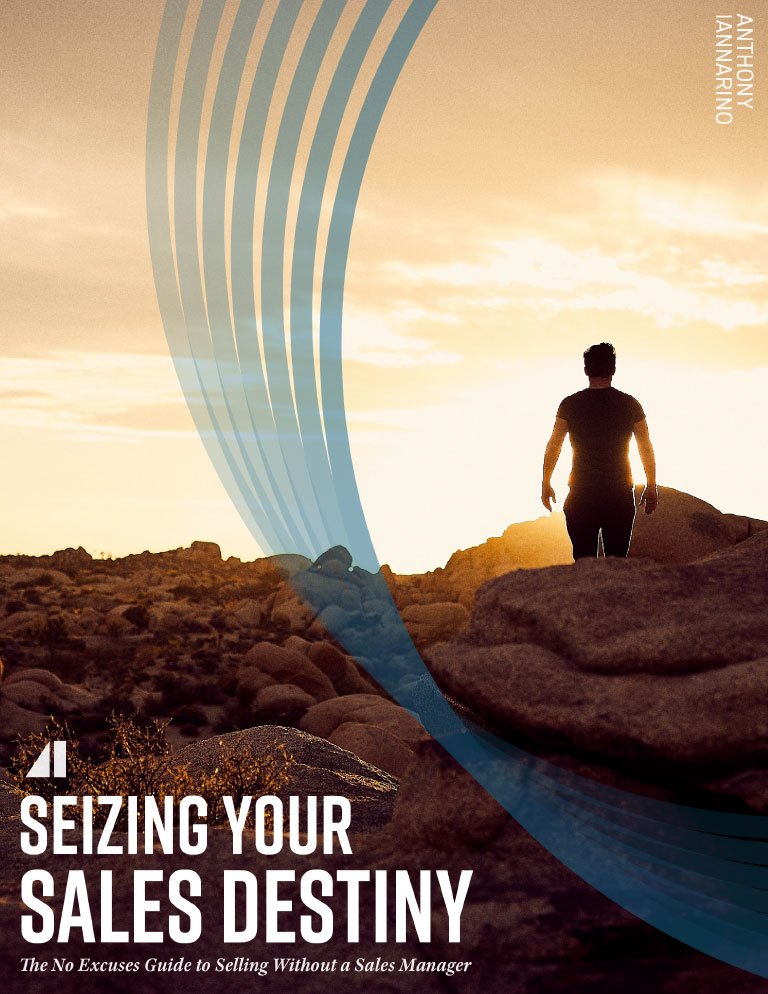One easy way to miss your sales targets is to believe that the amount of potential revenue alone indicates that you have enough coverage to reach your goal. That single indicator ignores too many other factors that might decimate the revenue number with a few unexpected negative events.
What is worse is when your opportunities are heavily weighted toward large, high-risk, high-reward deals, ones that are prone to being lost or pushed, due to the complexity and significance of your prospective client’s decision. You might be certain the single, enormous deal that dominates your pipeline, your time, and your hopes and dreams will cross the line, only to find out the client “decided to go another direction.” Here’s a strategy for developing a more balanced pipeline.
Barbell Strategy
Imagine a barbell: a long metal bar with equal weight attached to each side. The weight on one side represents an extremely conservative approach with reasonable, stable results and rewards, while the other side represents an extremely aggressive approach, one with tremendous risk and equally titanic rewards. Your pipeline might have several weights on the conservative side of the bar but far fewer on the risky side.
We have to be careful with the idea of weight in this metaphor. Balancing the barbell isn’t about the size of the deals alone: small or medium deals are not always conservative, and large deals are not only risky. Instead, you are measuring the risk and reward, with the conservative side including deals that have less risk associated with them.
The more weight you have on the conservative side of your barbell, the greater your ability to pursue deals that, while long shots, will provide an enormous payoff should you win. What exposes you to harm is having too little on the conservative side and far too much on the risky side. Instead, for instance, you could have three large, low-risk deals on your conservative side and one very large deal on the high-risk side. You could also have a large number of medium-sized deals on the conservative side, plenty to make your goal, with a single monstrosity of a long shot on the high-risk side.

How to Measure Risk
A dozen or more factors can help you determine how much risk there is of losing a deal. Being willing to look at these factors objectively improves your ability to reach your goals, by allowing you to discount your chances where there are too many factors working against you (I would never dissuade you from working to win deals even when your chances are low, but sometimes it’s wise to take long-shot deals out of any forecast).
Compelled to Change: One factor that suggests lower risk is a prospective client who is compelled to change. The more negative the consequences for not changing (and the more benefits for changing), the more you can be certain the client will change—even if they don’t choose you. When there is nothing compelling the client to change, there is a much higher risk of a “no decision.”
You Compelled the Change: The fact that you are the one that helped your prospective client to change is strong evidence that they’ll seriously consider buying from you. An approach that allows you to proactively compel change reduces your risk. When your competitor compelled the change, you have much greater risk.
Level of Engagement: The more engaged your prospective client is with you, the less risky your deal is, compared to deals where you’re at arm’s length. If your decision-makers and decision-shapers are not willing to give you time, assume that there’s greater risk.
Amount and Nature of Competition: In some businesses, you might be the only one speaking to a client about an initiative or engaged in displacing your competition. In other scenarios, you might be one of many pursuing a deal. When there is no competition, obviously you don’t have to be concerned with losing a deal to a competitor. When the client is evaluating multiple potential partners, unless you have many other factors in your favor, your odds of winning are a percentage of the total number of competitors. The more competition, the more risk, generally.
Commitment to the Sales Conversation: Another way to measure risk is to assess the client’s commitment to the sales conversation. Are your contacts making and keeping the commitments to the meetings you have scheduled with them? The more frequently they miss meetings or reschedule them, the more you should be concerned about losing or delaying a deal. You can find more about commitment-gaining in The Lost Art of Closing: Winning the 10 Commitment That Drive Sales.

Ownership of the Solution: In a lot of cases, when your client has worked with you to build a solution that is uniquely their own, they are more committed to seeing it through. Conversely, if the client is unwilling to participate in the design—especially when you should expect the client to share their preferences—you have a greater risk of losing.
Access to Leadership and Other Stakeholders: The more access you have to stakeholders, including a significant person or persons in leadership, the less risk you have of losing the deal, and vice versa. When few know you and you know few, you should perceive greater risk.
The Value of the Solution to the Enterprise: In Eat Their Lunch: Winning Customers Away from Your Competition, I provided a simple, straightforward view of the value you create, the lowest level being your product or solution and the highest being a clear strategic advantage. The more strategic the outcome you create, the less risk you have of losing a deal, especially if the other factors in this list are in your favor.
Volatility: Some companies experience a high level of volatility. The more susceptible they are to external or internal factors, the riskier it is to count on the opportunity closing in your timeline—or closing at all. Lower volatility equals lower risk, and higher volatility means you are pursuing something with a greater risk of being lost.
You can always pursue deals with a low probability and a potentially high return. But you make it easier and safer if you have heavily weighted deals on the other side of your barbell.

Get the Free eBook!
Learn how to sell without a sales manager. Download my free eBook!
You need to make sales. You need help now. We’ve got you covered. This eBook will help you Seize Your Sales Destiny, with or without a manager.
Download Now







.jpg?width=768&height=994&name=salescall-planner-ebook-v3-1-cover%20(1).jpg)


